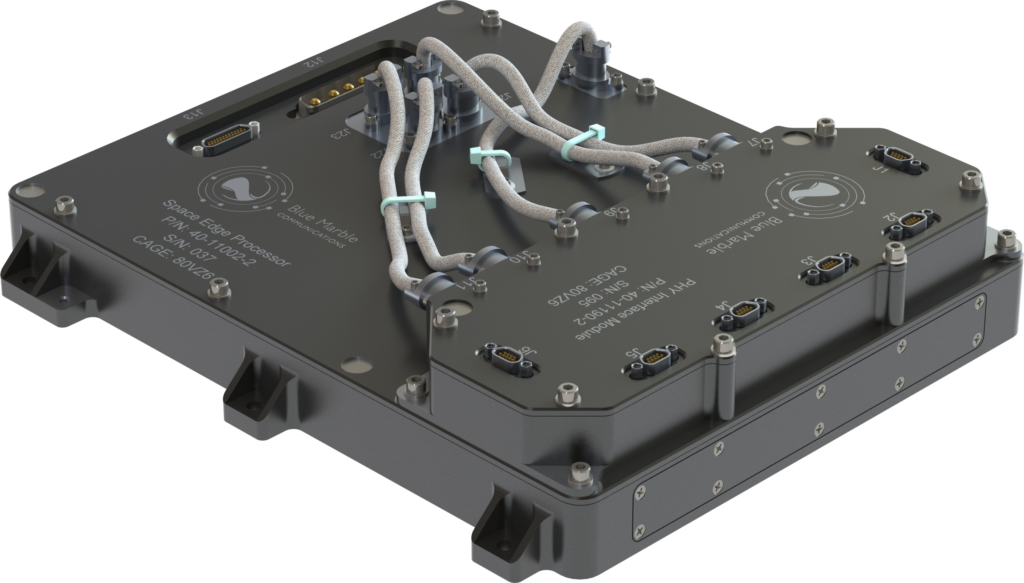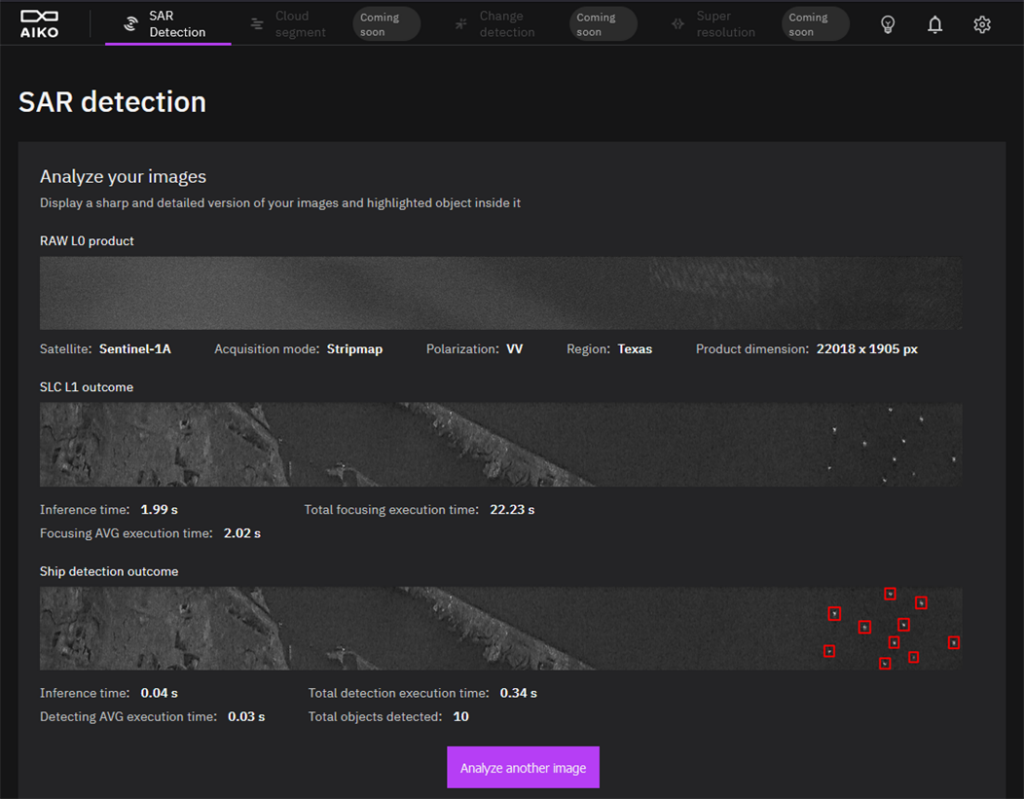Blue Marble Communications Inc (BMC) and BruhnBruhn Innovation AB (BBI) are delighted to unveil a revolutionary advancement in Generative AI capabilities for space assets. This groundbreaking achievement, made possible through a collaboration focused on radiation-hardened compute hardware and advanced AI software frameworks, sets a new standard for space technology and operations.
The BBI dacreo software stack for AMD Ryzen7 4000 and V2000 series of APUs enables advanced AI operations using the onboard GPU for devices such as the Space Edge Processor.

The introduction of the BMC Space Edge Processor (SEP), equipped with AMD’s cutting-edge 7 nm V2000 series accelerated processing unit (APU) and Versal Prime FPGA technology, marks a significant milestone. This hardware, when combined with BBI’s innovative AI software orchestration stack dacreo, showcases a pioneering step towards achieving true cloud-native operations and cognitive autonomy in deep space. BBI’s dacreo AI software stack for AMD Ryzen 7 4000 and V2000 series devices is based on a tailored AMD ROCm open-source compute stack, to fully harness onboard GPUs for artificial intelligence applications and enable cloud-native functionalities, including Kubernetes in space.
Groundbreaking onboard intelligence
The integration of onboard AI in space through the hardened SEP and dacreo software extends beyond mere technological advancement, opening a myriad of business opportunities across the space industry. This combination of radiation-hardened hardware and sophisticated AI orchestration empowers satellite operators, space exploration missions, and defense initiatives with unparalleled autonomy, flexibility, and low-latency operations, fundamentally transforming mission planning and execution.
This leap forward facilitates a new era of space-based services and applications. For satellite operators, it means enhanced communication networks that can autonomously manage traffic and optimize bandwidth in real-time, reducing operational costs and improving service quality. For space exploration, AI-driven autonomous navigation and data analysis enable deeper and more cost-effective exploration of the cosmos, allowing missions to adapt in real-time to unexpected conditions or findings without the need for direct human intervention.
In the defense sector, the technology’s low-latency response capabilities are critical. AI can analyze and act upon satellite imagery and sensor data in near real-time, offering unprecedented situational awareness and threat detection capabilities. This rapid processing and actionability can be the difference in critical moments, providing a strategic advantage in national security operations.
Moreover, the state-of-the-art AI applications facilitated by the SEP and dacreo ecosystem are groundbreaking. We’re able to enable a wealth of applications, including advanced machine learning models that can predict satellite component failures before they happen, dramatically reducing mission risks and maintenance costs. There’s also the development of AI-driven deep space communication networks that self-optimize for interference and signal loss, ensuring robust data transmission across vast distances.
Perhaps most exciting is the potential for AI to autonomously manage entire fleets of satellites, coordinating complex tasks like formation flying, on-orbit servicing, and debris avoidance. Such capabilities not only enhance the efficiency and lifespan of satellite constellations but also open the door to innovative space-based infrastructures and business models, from on-demand Earth observation platforms to in-orbit manufacturing and assembly. Intelligent onboard data processing and cloud-native space operations will become a catalyst for industry-wide innovation, creating new business opportunities and reshaping the future of space exploration and utilization. With these advancements, space becomes not only a place to explore but a dynamic environment ripe for commercialization, driven by intelligent systems that extend human reach and capabilities.
Cloud-native space operations
The time has come to moving beyond semi-static operations and bringing intelligence everywhere in space with introduction of Cloud-native space operations. The dacreo software stack provide containerized development and production images for rapid application, or “pod” development if using Kubernetes.
To demonstrate the power of the dacreo software stack in combination with the SEP radiation hardened solution, a number of containerized cutting-edge AI capabilities have been developed and was released at the Satellite 2024 show in Washington DC.
Astronaut Co-pilot assistant application demo
BBI dacreo GPT: An interactive astronaut co-pilot powered by an onboard Meta Llama 2 large language model, illustrating the dacreo ecosystem vast AI capabilities on radiation hardened computers offloaded on the GPU. The dacreo GPT is developed and tested at the BBI Space Kubernetes Laboratory.
Third-party application developers leveraging dacreo ecosystem
An ecosystem only have a commercial value if it is easy to use and rich in features and accepted. The dacreo ecosystem provide compatibility with “one-commit/one-push” DevOps flows which provide a fast and robust path to service and application deployment. This capability has been demonstrated in partnership with AIKO, a leading technology company, specializes in Artificial Intelligence and Automation technologies for space applications.
See through clouds capability – Real-time SAR processing and object detection application demo
AIKO dacreo GPT deepSAR: A real-time Synthetic Aperture Radar (SAR) stripmap processing and object detection application, highlighting the importance of onboard SAR processing for quick insights in challenging environments. The application is part of the new onboard data processing suite presented by AIKO and has been developed and tested at the BBI Space Kubernetes Laboratory.

These demonstrations represent just the beginning of what’s possible with advanced AI in space, enabling more efficient, autonomous, and intelligent operations beyond our atmosphere.
